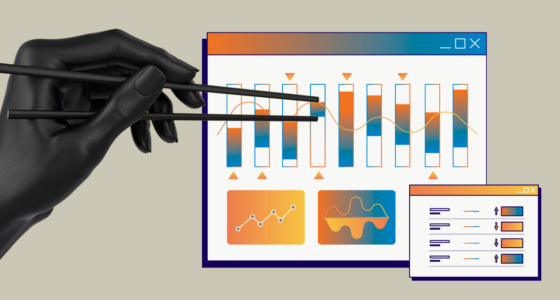

Traders use many tools to manage their trades. One such important tool is pivot points. These are used to identify where the asset’s value might move next. They are also used to come up with take-profit and stop-loss points. In this article, we will look at pivot points, how they are calculated, and how you can use them in the trading strategy on Forex or another market.
What is a pivot point?
A pivot point is an indicator used for the analysis of overall trends in the market over different time frames. The pivot point is calculated as the average of the high and low intraday values and the closing price of the equity from a trading day. Consider in your strategy the next day that a stock market trading above the pivot point indicates an ongoing bull trend. Conversely, trading below the pivot point indicates a bearish trend.
The pivot point also includes different resistance and support levels, which help you see where the price could experience support or resistance. In other words, a pivot point is a level at which market sentiment changes from bearish to bullish or vice versa. If the price breaks the first level of support or resistance, the market expects it to move to the second one.
How to calculate pivot points?
The pivot point is a widely used trading tool. On many platforms, such as Forex, you can turn on the pivot points indicator and use the automatically calculated data displayed on the chart for your trading strategy. On the other hand, you can calculate them yourself.
If it’s Wednesday morning and you’re looking to calculate the pivot points for the day, use the high, low, and closing points from Tuesday.
Sum the close, high, and low, and then divide it by 3. Mark this value on the chart as PP.
Once PP is calculated, find out S1, S2, S2, R1, R2, and R3.
Formula for pivot points
Save this formula as a PDF and start forming your pivot point trading strategy!
PP = (High + Low + Close) / 3
Other pivot levels are calculated using the following:
R1 = (2 x PP) – Low
S1 = (2 x PP) – High
R2 = (PP – S1) + R1
S2 = PP – (R1 – S1)
R3 = (PP – S2) + R2
S3 = PP – (R2 – S2)
Where:
High = highest price from the previous trading day.
Low = the lowest price from the previous trading day.
Close = the closing price from the previous trading day.
Note! While you can calculate these pivot points yourself for the day trading strategy, you can also use free calculators from different online platforms and use data for your day trading strategy.
Types of pivot points
You can calculate four kinds of pivot points. These are:
- Standard pivot points.
- Woodie pivot points.
- Camarilla pivot points.
- Fibonacci pivot points.
There is no single type of pivot point that can be said to be the best fit for your trading strategy. However, the standard pivot point is most commonly used, and it is the one we recommend you begin with.
Standard pivot points
The standard pivot point is calculated by adding the high, low, and close prices and dividing the result by 3 (to find their average).
The first resistance point (R1) is calculated by multiplying the calculated PP by 2 and subtracting the low [(2 x PP) – low]. The first support value (S1) is calculated as [(2 x PP) – high].
S2 and R2 are calculated as follows:
R2 = PP + (High – Low)
S2 = PP – (High – Low)
S3 and R3 are calculated as follows:
R3 = High + 2 x (PP – Low)
S3 = Low – 2 x (High – PP)
Woodie pivot point trading strategy
Another set of pivot points that can be calculated is the Woodie pivot points.
First, calculate the pivot point using the formula:
PP = (High + Low + 2 x Close) / 4
Then the resistance and support values can be calculated using the formulas:
S1 = (2 x PP) – High
S2 = PP – High + Low
R1 = (2 x PP) – Low
R2 = PP + High – Low
As mentioned, the PP and the other points are calculated using a formula different from the classic pivot points. Many traders prefer using these points because they give more significance to the previous period’s closing price.
Fibonacci pivot point trading strategy
Fibonacci retracement is a very important concept in the trading market, and it has been used for more than a century with much success.
You can also use it to calculate pivot points according to the following formula:
PP = (High + Low + Close) / 3
Formulas calculate support and resistance levels:
R1 = PP + ((High – Low) x 0.382)
R2 = PP + ((High – Low) x 0.618)
R3 = PP + ((High – Low) x 1.000)
S1 = PP – ((High – Low) x 0.382)
S2 = PP – ((High – Low) x 0.618)
S3 = PP – ((High – Low) x 1.000)
Camarilla pivot point trading strategy
The Camarilla pivot point is another popular type of day trading strategy used in the market. The characteristic that makes it different is that it uses the concept of Fibonacci lines in the calculation. The calculation for this one is relatively long. The first step is calculating the pivot point by adding the high, low, and close prices and dividing the result by 3.
PP = (High + Low + Close) / 3
To get R1 and S1, you use the following formulas:
R1 = ((High – Low) x 1.0833)) + Closing
S1 = Closing – ((High – Low) x 1.0833)

What do pivot points tell you?
You can use the pivot point strategy for intraday trading in futures, commodities, and stocks. Pivot points are static and stay at the same prices throughout the day. You can use pivot levels to plan your trading strategy.
For instance, traders can predict that if the price goes below the pivot point, they will most likely be shorting early in the session. On the other hand, if the price goes above the pivot point, they will be looking to buy. Similarly, S1, S2, R1, and R2 can be set as target prices for trades and stop-loss levels.
Combining pivot points and other indicators (such as the 50 or 200-period MA or Fibonacci extension levels) can help you make more accurate predictions of market trends because it becomes a stronger support/resistance level.
How to use pivot point in intraday trading?
Swing trading and the pivot point strategy go hand in hand. Since intraday trading demands active attention to market trends, the pivot point strategy is a great way to analyze and use market trends. If the current value is over the pivot point calculated using the importance of the previous day, the market can be expected to follow a bullish trend. In contrast, if the current value is below the pivot point calculated from the last day, it can be expected to follow a bearish trend.
Seven pivot levels can be marked on the chart: the pivot point, R1, R2, R3, S1, S2, and S3. The basic pivot level lies in the middle, the resistance pivot levels lie above it, and the three support pivot levels lie below it.
Thus, pivot points play a central role in the trading strategies of intraday traders. Calculating the pivot point and the levels of resistance and support helps to understand where the asset price will move.
Note! A trader can use the weekly pivot point strategy for swing trading instead of regular intraday trades.
Pivot point bounce
Pivot point bounce is a trading strategy that directs the trader on when to buy and sell stock. The key focus of this strategy is to identify the bounce in prices at pivot points. If the price of a stock touches the pivot point and goes back, it is an indication to open a trade.
You can buy stocks when an upside bounce occurs using the pivot point bounce strategy. And vice versa, selling them when the price bounces down is better.
A key factor to note is to set the ideal position of the stop-loss to reduce losses. The stop-loss order is set based on the period the stocks are expected to be held. Set a stop loss above the pivot point if you are holding a short period and below the pivot point if you are holding a long period.
Pivot level breakout
It is based on a stop-limit order strategy. Open a trade when the price passes the reversal level. If the trend is bearish, take a short trade; otherwise, keep a long position.
Having a stop-loss order threshold in an appropriate position is essential to avoid any kind of loss. Breakout trades are usually made in the morning, and adjusting the stop-loss limit helps secure funds against unexpected price changes.
Note! This video in Hindi shows how the pivot point trading strategy works.
The bottom line
The pivot point strategy is a great tool for intraday trading. However, as with all trading strategies, it is essential to remember that it cannot guarantee results every time. For some traders heavily rely on the pivot points trading strategy, while others don’t use it at all.
The key to successful trading is to find what works best for you and to combine different indicators and strategies for the best results.










